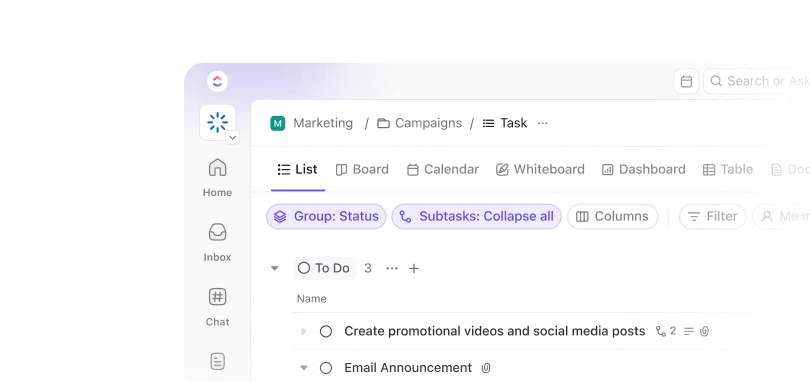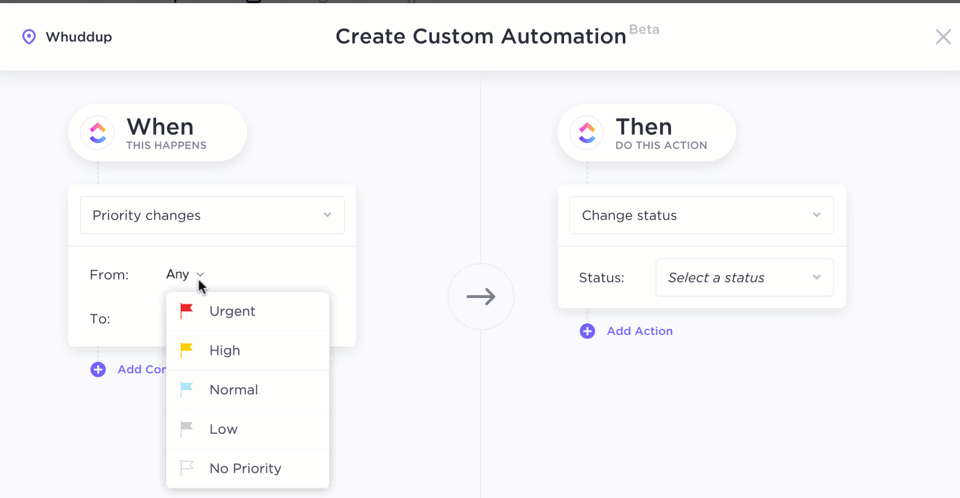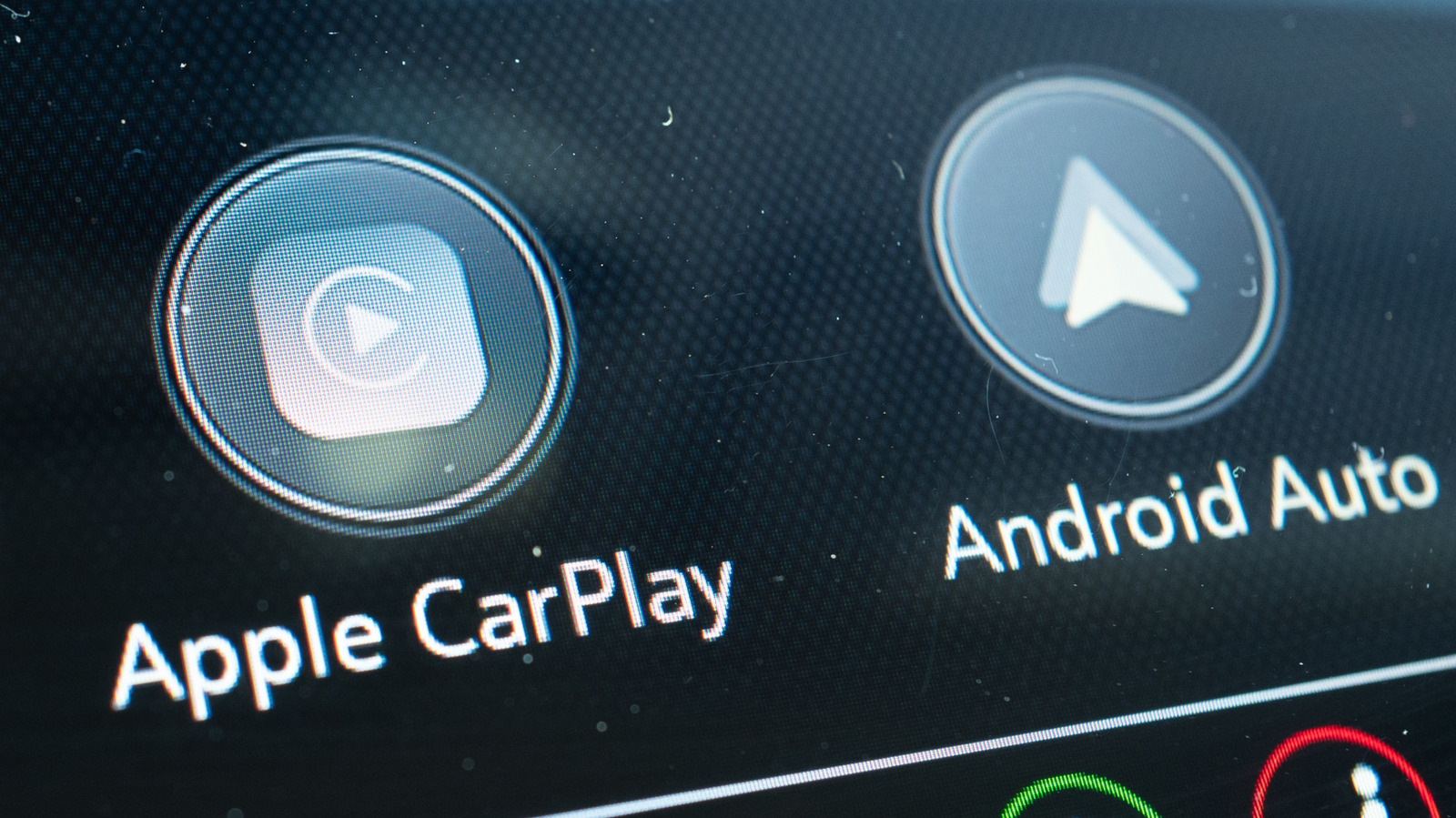A digital marketing agency owner found that Facebook and Instagram ads brought many leads but few sales. Tired of replying to endless WhatsApp messages that mostly inquired about prices, they set up a WhatsApp chatbot to handle customer inquiries.
They shared the result on Reddit: “On day 2, we got 340 inquiries, 48 leads, and 4 sales!…Automation is definitely the way to go.”
And so it is! Automating your WhatsApp Business helps you reply to your customers instantly with customized responses.
If you’re in a similar situation where customer inquiries drain your team’s time without real sales, this article on WhatsApp Business automation will guide your next steps.
🌟 Featured Template
’s Email Automation Template gives you a complete overview of your email workflows, making it easy to visualize every step, assign responsibilities, and trigger messages automatically when actions occur. It’s perfect for automating welcome sequences, form responses, or follow-up emails—all without manually sending anything
WhatsApp Business Automation: How it Works + Examples
What Is WhatsApp Business Automation?
WhatsApp Business automation uses the WhatsApp API and automation software to automate tasks like replying to customer inquiries, sending automated messages, and managing routine tasks.
This improves customer satisfaction, supports your communication goals, and provides valuable insights while saving time for busy teams.
Here’s how it can help you specifically:
- Send welcome messages, greeting messages, and quick replies for common customer queries
- Automate follow-ups, appointment reminders, payment reminders, and order confirmations
- Reduce repetitive work with WhatsApp automation tools to save time and money
- Scale your WhatsApp Business App to handle more customer interactions without extra staff
Why Automate Your WhatsApp Business Communications?
63% of consumers expect companies to understand their specific needs and expectations. That means a majority of your customers demand personalized responses and solutions to their challenges. Automating your WhatsApp Business can lead to customized and focused responses every time.
When done right, WhatsApp automation offers business teams real-time collaboration, faster and at scale. Here’s how:
- Handle routine tasks automatically: Use automated responses for FAQs, send order confirmations, and share appointment reminders, freeing staff for bigger tasks
- Offer instant, round-the-clock support: With WhatsApp automation tools, you can respond to incoming messages anytime, boosting customer satisfaction and trust
- Grow without extra costs: Automating WhatsApp messages means you can manage more customer interactions without hiring more people, saving money while also staying personal
- Collect valuable data: Every automated chat can gather insights to improve your sales process, refine your offers, and strengthen customer relationship management
10+ WhatsApp Business Automation Examples
If you’re wondering how to put WhatsApp Business automation into action, here are real, practical ways businesses use it every day:
1. Auto-reply to common FAQs
Common customer FAQs often cover product details, delivery, returns, payments, or policies.
Some examples include:
🔹 “How long will it take to receive my order?”
🔹 “What is your return policy?”
🔹 “What payment options do you accept?”
Setting up automated responses for these saves time, keeps your WhatsApp Business App running smoothly, and improves customer satisfaction.
Here’s how to automate WhatsApp replies for FAQs:
- Step 1: Open the WhatsApp Business app and go to Settings > Business Tools
- Step 2: Choose which WhatsApp auto-reply you need—a Greeting Message for new customers, an Away Message for after working hours, or Quick Replies to handle common customer queries fast
- Step 3: Write your auto-reply. Keep it clear, polite, and helpful. Add details like when they can expect a human reply or other ways to get help
- Step 4: Set the schedule and decide who gets these replies—everyone, new contacts, or select customers
- Step 5: Save your settings to activate your WhatsApp Business automation
📌 Example: Here’s a simple greeting you can set up right away:
“Hi [Name], thanks for contacting [Your Business Name]! We’ll get back to you within 24 hours.”
2. Abandoned cart recovery messages
Roughly 7 out of 10 online shoppers add products to their cart but leave without buying. That’s a huge missed opportunity for any e-commerce platform or small business.
Once customers opt in, you can automate WhatsApp messages triggered by abandoned cart events on your site or app. These messages can include images, product details, and a direct link to their cart, making it easy to pick up where they left off.
A smart abandoned cart flow often includes:
- A first reminder within a few hours
- A second message with a small incentive, like a discount or free shipping, after 24 hours
- A final follow-up after 48 hours with product suggestions or a quick thank-you message asking for feedback
Retailer Lojas Renner is a wonderful example. By automating abandoned cart recovery with WhatsApp Business API integration, they achieved read rates 70% higher than other channels and saw more customers return to complete purchases, often adding even more items to their carts.
3. Order confirmation and tracking
Order confirmation and tracking updates are some of the easiest ways to build trust with new and repeat buyers.
With WhatsApp Business automation, you can automatically send order confirmations, shipping details, and delivery updates straight to your customers’ WhatsApp. All this without the need for them to ask, “Where’s my order?”
Additionally, you have the option to include a thank-you note, an upsell coupon, social media handles, or even an invitation to join a private community. This keeps buyers informed and increases the chances of repeat sales and stronger customer engagement.
To set this up:
- Create or select a verified WhatsApp template for order updates
- Personalize it with the customer’s name, tracking link, and an optional upsell offer
- Enable your WhatsApp automation tool to send updates at the right time
4. Appointment reminders
No-shows and forgotten bookings are a pain for service businesses, from clinics and salons to coaching sessions and consulting.
WhatsApp Business automation makes it easy to send messages, including appointment reminders, automatically, so your customers remember and show up on time.
📌 Example: “Hi [Name], this is a reminder about your appointment with [Business Name] on [Date] at [Time]. Please bring your ID. Reply RESCHEDULE if you need a new time slot.”
To set up appointment reminders with your WhatsApp Business App:
- Use the WhatsApp Business API integration to connect your booking system
- Create a clear, friendly WhatsApp template for your reminder
- Personalize it with the customer’s name, date, time, and any special instructions
- Schedule the message to go out 24–48 hours before the appointment
👀 Fun Fact: With 2 billion users worldwide and an average open rate of 98%, WhatsApp is one of the easiest ways to reach your customers anywhere, anytime, and keep the conversation going at every stage of the funnel.
5. Lead qualification bots
Lead qualification bots on WhatsApp are smart, automated assistants that help filter serious buyers from casual browsers, saving your sales team hours of manual work. With WhatsApp Business automation, these bots engage new prospects, ask key questions, and send the best leads straight into your CRM or sales funnel.
Here’s how they work. They start conversations with anyone who clicks through from an ad, your website, or a WhatsApp Business API integration. Using simple, friendly questions, they qualify each prospect’s needs, budget, and timeline.
They collect useful details such as contact information and preferences, so your sales team can follow up with context.
Once the bot scores a lead, it can trigger automated messages, update your CRM, or alert your team instantly without missing opportunities.
Pediasure Indonesia‘s Facebook ads are a good example of WhatsApp Business Automation for lead generation. Users who clicked on their Facebook ads were directed to WhatsApp with lead bots. This cut their cost per lead by 64% while improving customer acquisition results.
📮 Insight: Nearly 45% of workers say they’ve thought about using automation but haven’t made the jump. Limited time, too many choices, or not knowing where to start often hold people back.
With ’s easy-to-build AI agents and simple, natural language commands, getting started with automation is finally simple. From auto-assigning tasks to creating AI-powered project summaries, you can unlock smart workflows and build custom AI agents in just minutes, without a steep learning curve.
💫 Real Results: QubicaAMF reduced reporting time by 40% using ’s dynamic dashboards and automated charts, turning hours of manual work into instant, actionable insights.
6. Payment reminders
Late payments and missed invoices can disrupt a business’s cash flow. WhatsApp Business automation makes it easy to send notifications, including friendly, timely payment reminders, directly to your customers.
You can set up automated messages through the WhatsApp Business API or link your payment data to a trusted automation tool.
Once integrated, the system can check payment status and send reminders when payments are due or overdue, helping you avoid awkward calls and manual follow-ups.
📌 Example: “Hi [Name], this is a quick reminder that your payment of [Amount] for invoice [#] is due today. Please use this link to complete your payment: [Payment Link]. If you need any clarification, just reply here. Thank you, [Your Business Name].”
7. Feedback collection after service
Any business focused on improving its customer experience needs to actively seek customer feedback.
With WhatsApp Business automation and effective WhatsApp marketing, you can send short surveys, quick polls, or even interactive chats right after a purchase, booking, or service.
A successful flow starts by defining what you are keen to learn and then creating clear WhatsApp templates with simple questions. Automation handles sending reminders, collecting answers, and storing feedback in your CRM or dashboard for easy analysis.
For example, you might send a message like:
“Hi [Name], Thank you for choosing us. How would you rate your experience from 1 to 5? Your feedback helps us serve you better.”
🧠 Did You Know? Barclays predicts that tapping into the ‘Feedback Economy’ could unlock a $3.2 billion opportunity in the UK over the next decade.
8. Promotional broadcasts (with opt-in)
Promotional broadcasts on WhatsApp are a powerful way to keep your customers engaged with special offers, product updates, or seasonal deals—but only if you do it right.
With the WhatsApp Business API, you can send bulk messages to customers who have explicitly opted in while still giving them an easy way to opt out whenever they want.
First, always secure clear consent. Customers can opt in through website forms, a simple WhatsApp chatbot, or during an initial WhatsApp Business App conversation. Be transparent about what they’ll receive, like exclusive discounts, new arrivals, or loyalty perks.
Once you have permission, craft your promotional WhatsApp messages carefully. Add images, videos, or action buttons that link to your catalog or website. Personalize each message with the customer’s name or past purchase details to make your promotions feel relevant and not spammy.
9. Loyalty program updates
Did you know 85% of customers say loyalty programs make them more likely to keep shopping with a brand?
That’s why more businesses are turning to WhatsApp Business automation to keep loyalty updates instant, personal, and easy to access.
With the WhatsApp Business API, you can update customers about new products, send special discounts, and share limited-time rewards. Smart WhatsApp chatbots can even suggest offers based on past purchases.
Loyalty updates through WhatsApp also help keep retailers and channel partners informed with real-time performance insights and quick campaign announcements.
📌 Example: “Hi [Name], your loyalty balance just hit 1,500 points. Use them to get 20 percent off your next order. Tap here to redeem your reward.”
10. Onboarding new customers
Onboarding new customers is one of the most important moments for building trust and setting the tone for the entire customer journey. With WhatsApp Business automation, you can make this process smooth, clear, and personal for your customers. Here’s how:
When a customer signs up, your WhatsApp Business App can automatically send a warm welcome, share setup steps, or guide them through the first actions they need to take.
A good onboarding flow greets the customer by name, confirms their details, and shares helpful tips or links to get started right away.
Example: Leading brands trust WhatsApp for onboarding, too. Martine van der Lee, Director of Social Media at KLM, shares:
11. Event registration confirmations
Sending event registration confirmations through WhatsApp Business automation is an easy way to reassure attendees and keep them informed instantly.
A typical confirmation might look like this:
“Hi [Name], Thanks for registering for [Event Name]. Your spot is confirmed for [Date] at [Time]. Click here for event details: [Link]. We look forward to seeing you.”
With the WhatsApp Business API, you can connect your event management system to send confirmations the moment someone registers automatically.
Ensure your event form collects a valid WhatsApp number so every confirmation reaches the right person.
📚 Bonus Read: Want to run your projects smoothly and get more done? Workflow Examples and Use Cases show you how to build smart workflows that keep your team on track and your goals within reach.
Makes WhatsApp Business Automation Easy
One of the biggest headaches with WhatsApp Business automation is not sending the message, but rather handling what happens after it.
Most businesses set up WhatsApp automation for outgoing messages such as order updates, abandoned cart nudges, and appointment reminders. But when customers reply with something simple like, “Can I get an invoice?” or “Is this product available in blue?” those replies often get buried in chat threads.
As a result, the customer is left waiting, or even worse, they may switch to a competitor that responds more quickly.
fixes this by making sure every WhatsApp reply instantly turns into a clear next step your team can see, track, and complete before the customer ever feels ignored.
Manage workflows that trigger WhatsApp messages with Automations and Custom Agents
With Automations, you can build workflows that send WhatsApp messages when real actions happen. If a task status changes to Paid in , the customer automatically gets an order confirmation or thank-you message on WhatsApp.
You can make automations smarter with AI Agents and custom triggers. With your own Custom AI agent, you can customize it to read messages, prioritize tasks, and route them to the right person. So, your WhatsApp workflows handle routine questions automatically and leave only the important ones for your team.
You do not have to remind your team to send it manually. The workflow keeps your CRM and WhatsApp updates connected, so your brand always looks professional and quick to respond.
Here’s a visual guide that illustrates how Automations streamline your workflow automation:
Update CRM statuses and keep your team moving fast
When a customer replies on WhatsApp to confirm an appointment, request a change, or ask for more details, instantly updates the status in your pipeline or creates a follow-up task for the right team member.
For example, when a new lead message comes in on WhatsApp, captures the customer’s information, fills in key details, and assigns it to the right sales rep with a clear due date. Everyone knows what to do next, no reply goes unseen, and no warm lead cools off while your team figures out who owns it.
Generate custom WhatsApp responses with Brain and Brain Max
Brain helps you create different personalized WhatsApp responses based on different customer scenarios that you can then add to your backend. The result? Customers get real-time responses that are perfectly suited to their query.
Is your customer looking for information about their order?
Looking to remind shoppers about their abandoned cart?
Just type in your scenario and what kind of response you’re looking for (style, tone, format), and ’s AI will customize it as per your requirement.
And there’s more!
With Brain MAX, you can:
- Instantly search , Google Drive, GitHub, OneDrive, SharePoint, and ALL your connected apps + the web
- Use Talk to Text to ask, dictate, and command your work by voice—hands-free, anywhere
- Replaces dozens of disconnected AI tools like ChatGPT, Claude, and Gemini with a single, contextual, enterprise-ready solution
Try Brain MAX—it’s the AI Super App that truly understands you, because it knows your work. Ditch the AI tool sprawl, use your voice to get work done, create policy documents, assign tasks to team members, and more.
Keep context clear with Chat
Chat keeps your entire team aligned while handling WhatsApp replies. Your sales team can discuss follow-ups right inside , share screenshots, drop files, and turn messages into tasks with one click.
You can link chats directly to pipeline tasks so everyone stays in the loop. eliminates the need for lost context or hopping between disconnected apps, providing clear action and progress in a single location.
Compliance and Best Practices for WhatsApp Automation
To keep your WhatsApp Business automation compliant and customer-friendly, follow these simple best practices to protect your brand and build trust:
- Always get a clear, documented opt-in from your customers before sending any WhatsApp messages, especially promotional ones
- Use only approved message templates for initiating conversations, and follow the 24-hour customer service window for replies
- Keep your business profile up-to-date with correct contact details so customers know exactly who they’re talking to
- Respect all opt-out requests immediately and avoid sending any unexpected or misleading messages
- Never share sensitive personal or payment data, and follow all local data privacy laws
- Use clear escalation paths, like a human agent or phone support, so customers can get help beyond the bot if needed
Handles Your Automations, So You Can Relax
If you’ve made it this far, you already know that WhatsApp business automation makes the difference between missed messages and closed deals, between wasting time on repetitive replies and actually growing your business.
However, automation alone does not provide a comprehensive solution. Even the smartest bot can’t save you without the right system to capture, track, and act on every WhatsApp conversation.
This is why integrating WhatsApp with transforms every ping into a clear next step, every reply into a trackable task, and every lead into revenue you can’t afford to lose.
So, what’s up next for your business? Sign up on now and see how smooth automation really looks when your whole team’s on the same page!
FAQs on WhatsApp Business Automation
Yes, WhatsApp Business allows users to easily set up auto-replies, including greeting messages for new customers, away messages for outside business hours, and quick replies for frequently asked questions. You can create and manage these right in the app under Business Tools.
Popular tools include the WhatsApp Business API (via official providers), chatbot builders, and CRM integrations. Many businesses use platforms like to trigger WhatsApp messages based on task updates, customer actions, or CRM workflows.
You can link your online store with the WhatsApp Business API and set up automations for order confirmations, shipping updates, abandoned cart reminders, or promotions. Most e-commerce platforms like Shopify or WooCommerce have plugins or integrations to help you do this without manual work.
Basic automation features like auto-replies and quick replies are free with the WhatsApp Business app. For advanced automation, like sending promotional broadcasts or integrating with your CRM, you’ll need the WhatsApp Business API, which usually involves costs charged by official providers or third-party tools.


Everything you need to stay organized and get work done.













